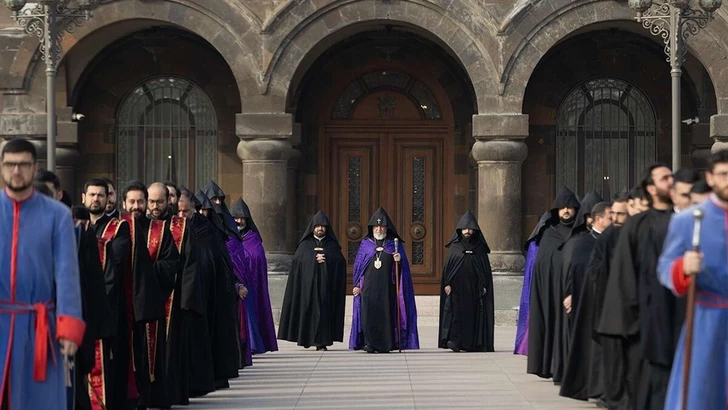Baku, August 20 — For the first time in decades, peace between Azerbaijan and Armenia has moved from distant aspiration to political reality. The Washington summit on August 8 demonstrated that Yerevan’s leadership is finally prepared to face facts: territorial claims and aggression toward Azerbaijan have brought only disaster to Armenia itself.
Prime Minister Nikol Pashinyan, addressing his people after the summit, admitted: “We have finally rejected war as an instrument. This is the beginning of a new stage.” His words carry weight. By publicly disavowing any attempt at revenge, he opened the door to a new logic — one based on coexistence, not conflict.
And yet, even as Armenia’s government takes timid but real steps toward reconciliation, it faces a formidable domestic adversary. Not the opposition, not diaspora lobbyists — but the Armenian Apostolic Church.
For centuries, the Church has acted as the ideological engine of Armenian nationalism, promoting the poisonous illusion of “Greater Armenia” and teaching generations to view Turks and Azerbaijanis not as neighbors but as eternal enemies. Its influence runs deep, from the Etchmiadzin Catholicosate to the so-called “Great House of Cilicia” in Lebanon, each echoing the same refusal of compromise.
The most recent example came from Catholicos Aram I, who rejected the significance of the Washington peace breakthrough and insisted that “Artsakh is not the past.” This defiance stands in stark contrast to Pashinyan’s own recognition that without closing the Karabakh chapter, peace is impossible. The Church, in short, still clings to a myth that has already condemned Armenia to economic isolation and repeated defeat.
This is more than stubbornness. It is dogma. It is the sanctification of war as destiny, the glorification of territorial obsession as divine mission. And it is precisely this clerical grip on the Armenian consciousness that remains the greatest obstacle to regional stability.
Governments can amend constitutions, sign treaties, and redirect national policy. Societies, over time, can adapt to new realities. But dismantling the Church’s entrenched role as the spiritual supplier of hatred will be a far more difficult — and painful — process. Without it, every peace initiative risks sabotage from within.
The great tragedy is that ordinary Armenians are the victims. They are denied the chance to live in prosperity, trade openly with their neighbors, and integrate into a peaceful South Caucasus. Instead, they are held hostage by clerical dogma that demands sacrifice not for Armenia’s future, but for its past.
If Yerevan is serious about peace, it must face this truth: the road to reconciliation runs not only through Washington or Baku, but also through Etchmiadzin. Until the Armenian Church is stripped of its role as the high priest of hostility, peace will remain fragile, forever threatened by the very institution that claims to embody the nation’s soul.










